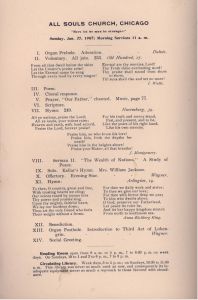So, Hubby and I sometimes imagine a version of Washington, D.C. according to an alternative historical timeline, on a planet we call Earth 2. With today’s realities a bit different, changed by what-could-have-been. The garden variety stuff of science fiction.
And somehow this thought brings me to the thought of Jewish liturgics. OK: I watched several hours of Yom Kippur services from Reform temples on streaming video, but I’ll address that later. Now, I’m going to wade out into the liturgical habits and controversies of another religion, and that’s usually a bad idea, so I ask your indulgence for a moment. Let it be granted that the liturgical innovations of the earlier Reform Jewish generations are commonly portrayed (fairly or not) today as imitating Protestant worship, particularly in predominant use of English, hymn singing; sometimes, rabbinical dress. Reform worship has, in succeeding generations, become more traditional in custom, particularly in its use of Hebrew. (There’s a countervailing movement I’ll try to get back to; again, later.)
But, being Protestant, I’m curious to see what they came up with.
And what did I find? A Reform hymnal contemporary to the 1937 joint Unitarian and Universalist Hymns of the Spirit (“the red hymnal”). Thus my Earth 2 moment. Really, it’s also a parallel to the old Beacon Song and Tune Book: they both include fully-worked services for children. It’s the Union Hymnal.
I’ve round references to the Union Hymnal in print until the 1950s. The one linked here, despite the earlier bibliographical information is from 1936.
It’s not so unlikely a parallel development. There was a time (before this) when the most progressive Unitarians and Reform Jews made goo-goo eyes at each other. (Not sure off-hand if any Universalists joined in.) The 1937 joint Unitarian and Universalist Hymns of the Spirit (“the red hymnal”) starts with a Jewish hymn: “Praise to the Living God”, co-translated by Unitarian minister Newton Mann and Reform rabbi Max Landsberg. It’s also found in the most recent Unitarian Universalist hymnal, Singing the Living Tradition at 215.
And here it is; note there are more stanzas than we use.
The connection cuts both ways, with Unitarian-written texts in the Reform hymnal: here, here, here, here and doubly here. I’m sure there are more.
A resource to review, methinks.
 Don’t bother telling me it’s too early to think about Christmas Eve. As an ordained minister (though not one serving a parish) I know Christmas needs to be planned well in advance. And while the ideas I’ll be blogging about are not (for me) actionable, they’re not too early. I do hope they’re useful for a stressed small-church leader, lay or ordained.
Don’t bother telling me it’s too early to think about Christmas Eve. As an ordained minister (though not one serving a parish) I know Christmas needs to be planned well in advance. And while the ideas I’ll be blogging about are not (for me) actionable, they’re not too early. I do hope they’re useful for a stressed small-church leader, lay or ordained.



